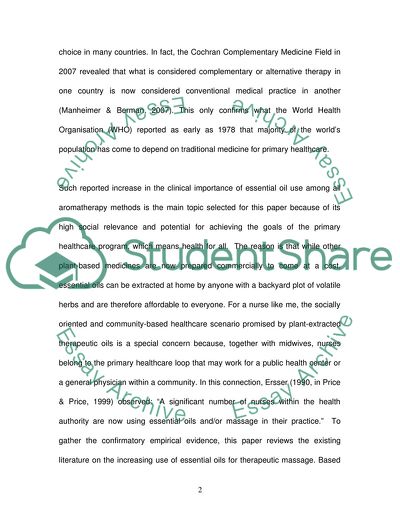Cite this document
(Aromatherapy Case Study Example | Topics and Well Written Essays - 2750 words, n.d.)
Aromatherapy Case Study Example | Topics and Well Written Essays - 2750 words. https://studentshare.org/health-sciences-medicine/1715034-evidence-for-health-and-social-care
Aromatherapy Case Study Example | Topics and Well Written Essays - 2750 words. https://studentshare.org/health-sciences-medicine/1715034-evidence-for-health-and-social-care
(Aromatherapy Case Study Example | Topics and Well Written Essays - 2750 Words)
Aromatherapy Case Study Example | Topics and Well Written Essays - 2750 Words. https://studentshare.org/health-sciences-medicine/1715034-evidence-for-health-and-social-care.
Aromatherapy Case Study Example | Topics and Well Written Essays - 2750 Words. https://studentshare.org/health-sciences-medicine/1715034-evidence-for-health-and-social-care.
“Aromatherapy Case Study Example | Topics and Well Written Essays - 2750 Words”. https://studentshare.org/health-sciences-medicine/1715034-evidence-for-health-and-social-care.


